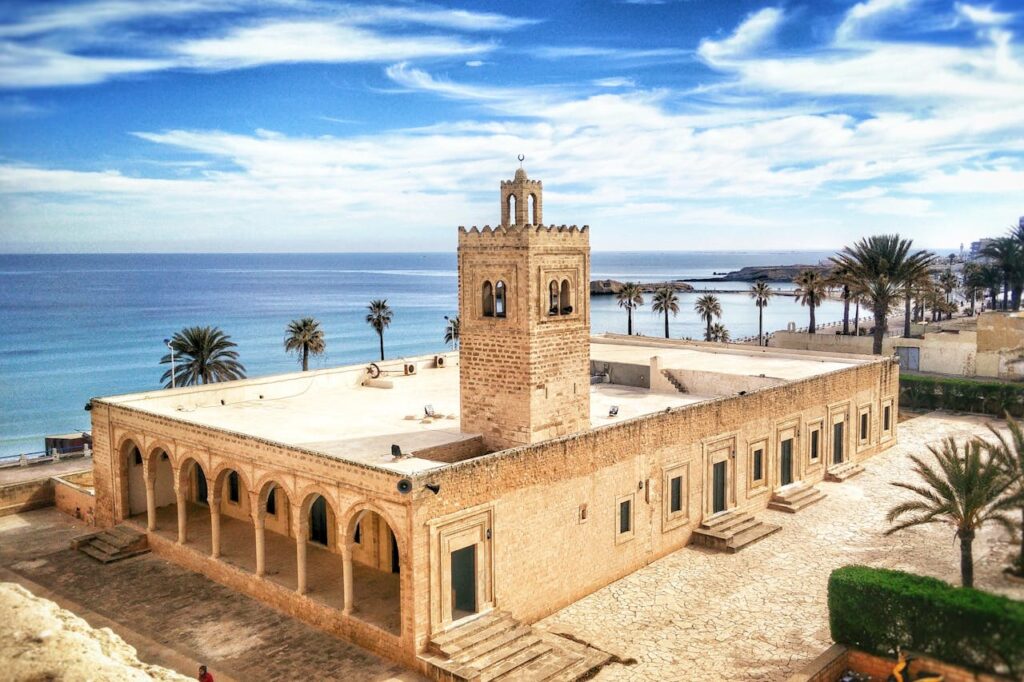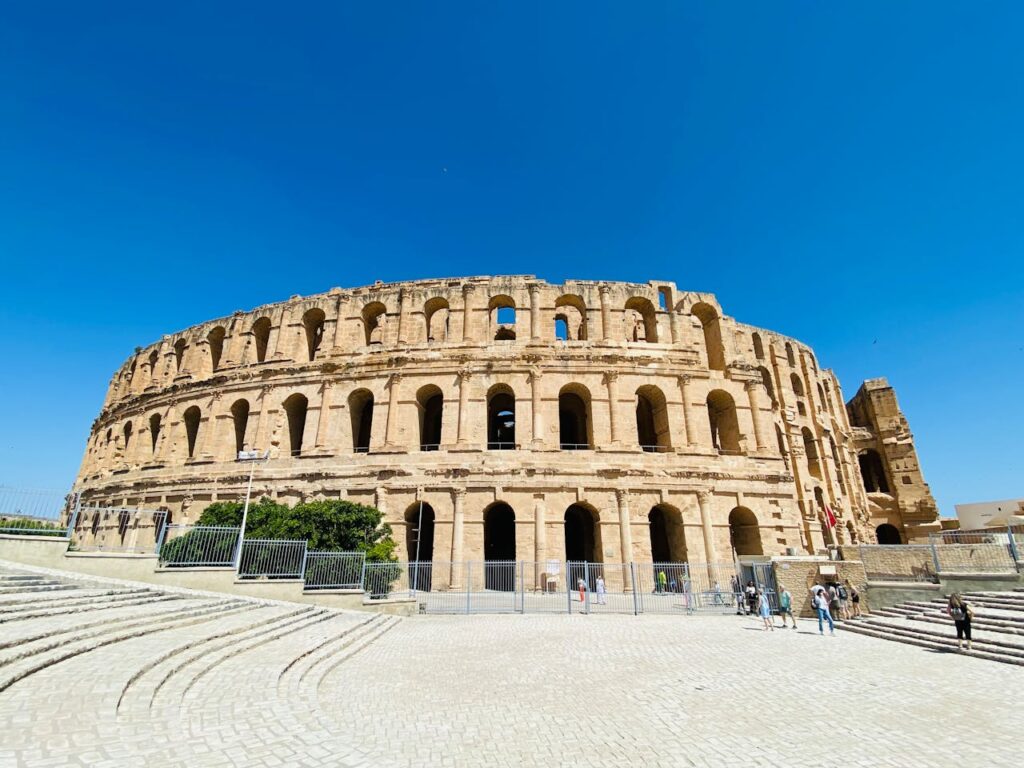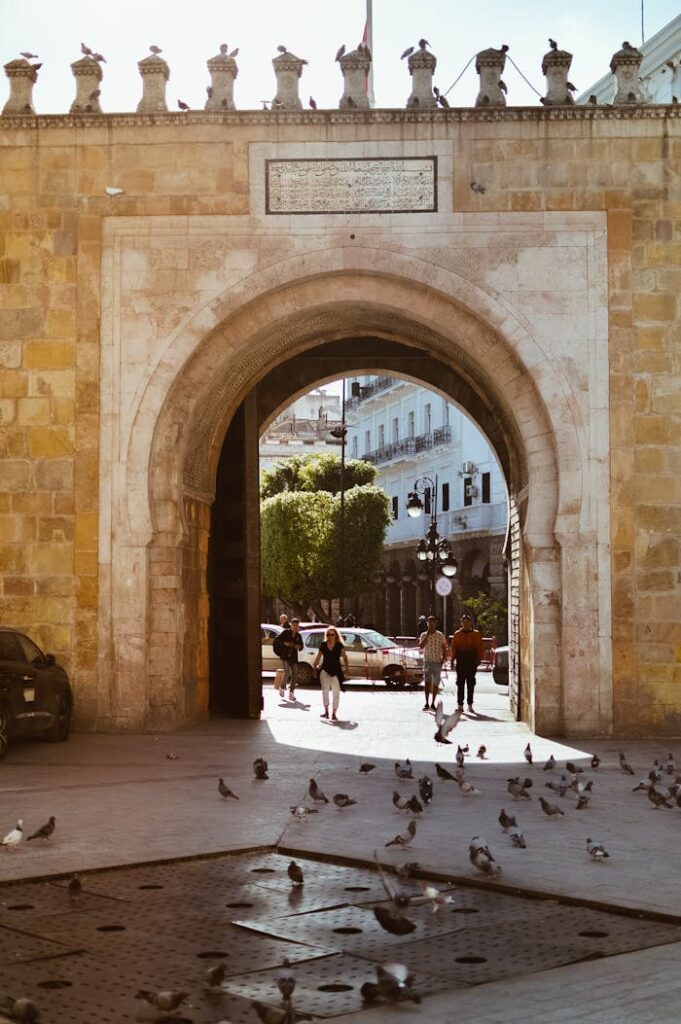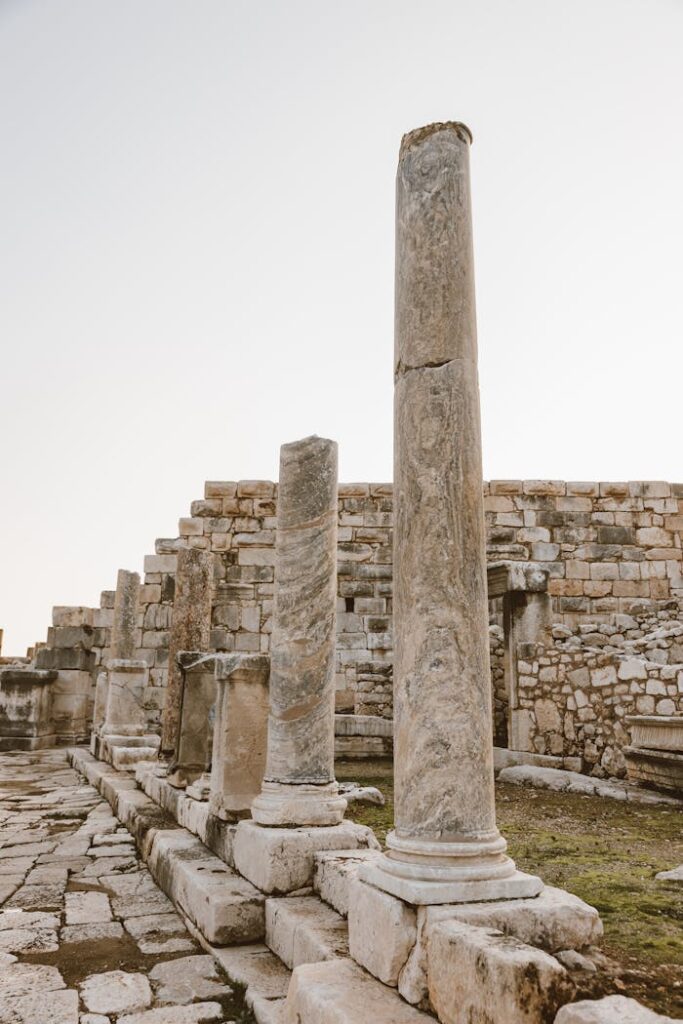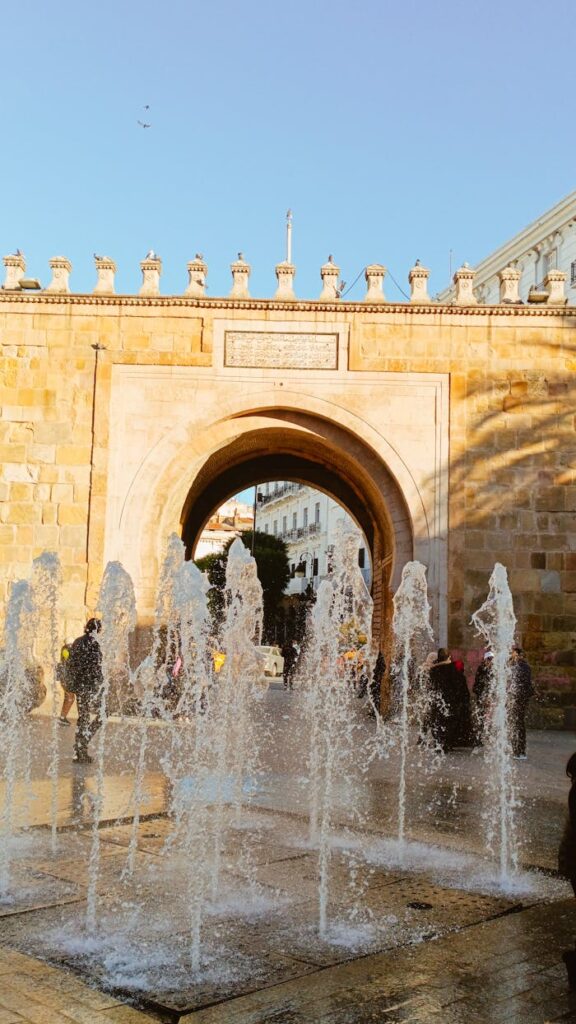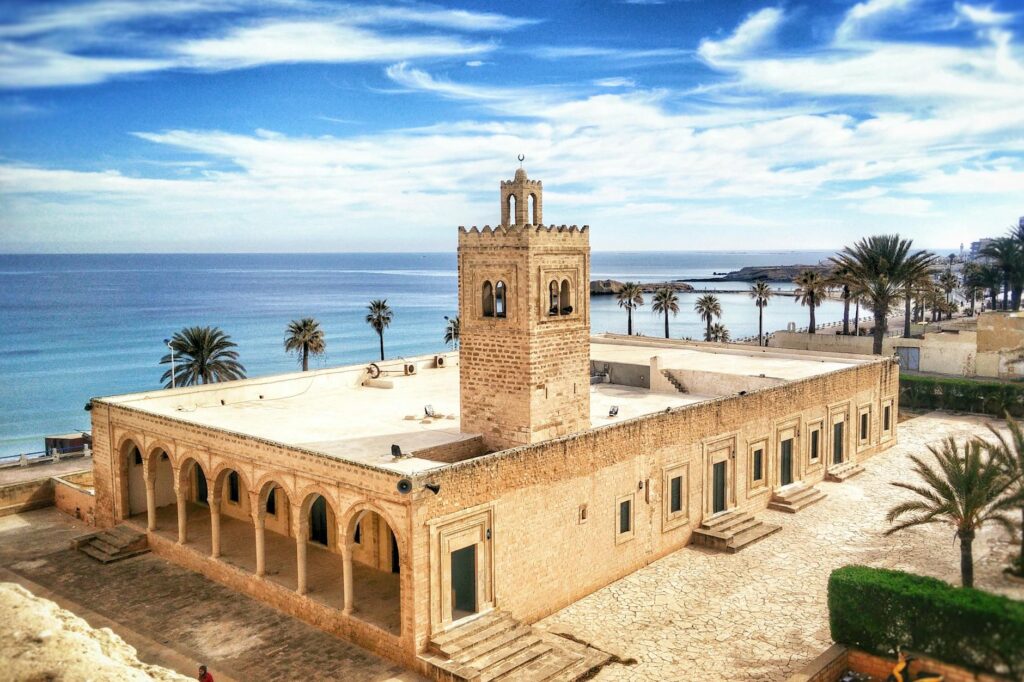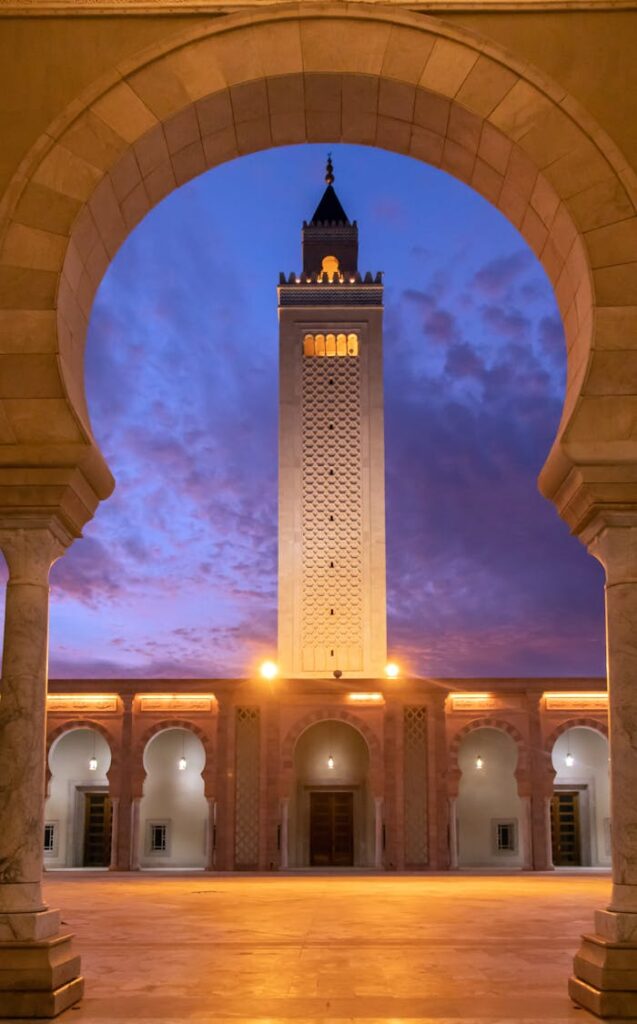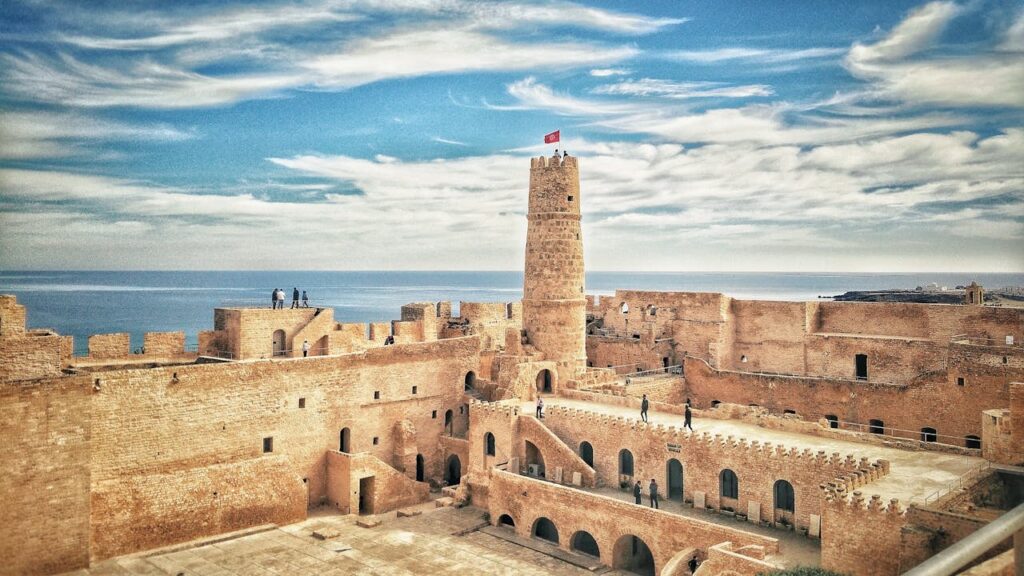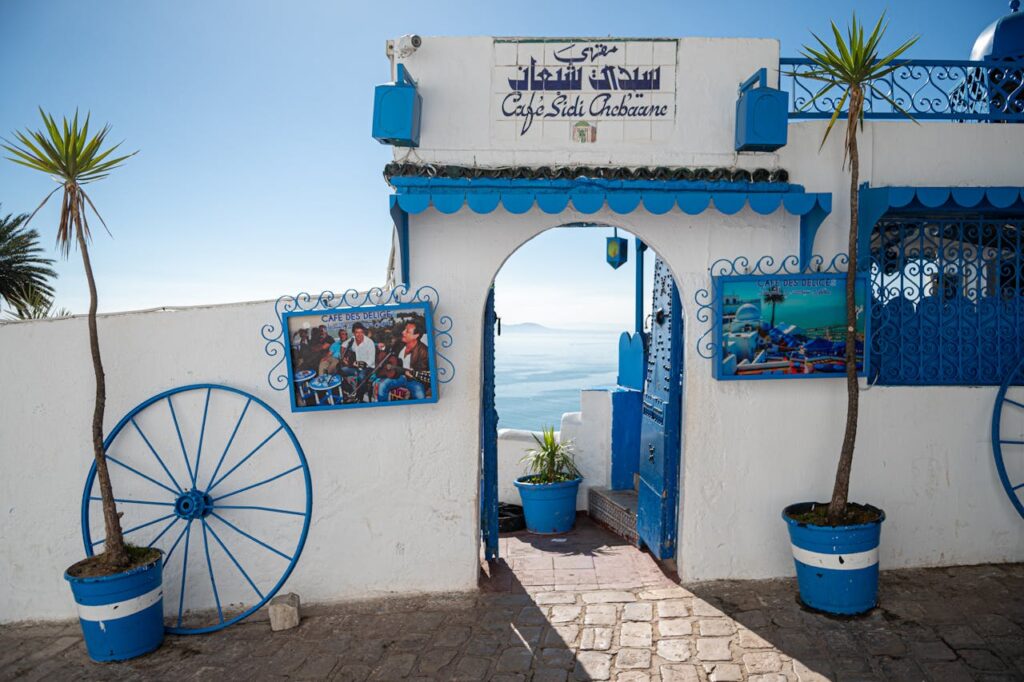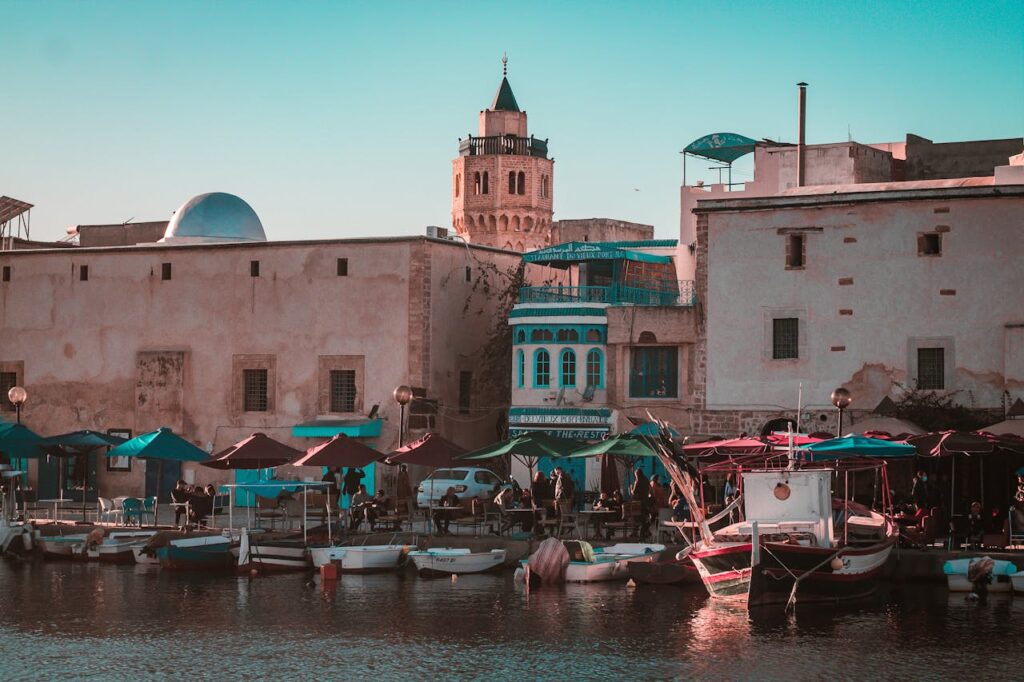Tunis, the vibrant capital of Tunisia, is a city that beautifully blends rich history with modern culture. Known for its well-preserved medina, bustling markets, and stunning architecture, Tunis offers a unique mix of ancient and contemporary attractions. The city’s strategic location on the Mediterranean coast has made it a cultural crossroads for centuries. From historical sites to modern museums, Tunis is a treasure trove for travelers seeking a diverse experience. Here are some of the best places to visit in Tunis:
Best Places to Visit
1. Medina of Tunis
The Medina of Tunis is a UNESCO World Heritage site and one of the best-preserved medieval Islamic cities in the world. This ancient quarter is a maze of narrow streets filled with souks, mosques, palaces, and traditional houses. Key attractions include the Zitouna Mosque, Dar Hussein, and the vibrant Souk El Attarine. The Medina offers a captivating glimpse into Tunis’s rich history and culture, with plenty of opportunities for shopping and exploration.
- Key Attractions: Zitouna Mosque, Souk El Attarine.
- Activities: Exploring historic buildings, shopping.
- Location: Central Tunis.
2. Bardo National Museum
The Bardo National Museum is one of the most important museums in the Mediterranean region and is renowned for its extensive collection of Roman mosaics. The museum is housed in a former palace and showcases artifacts from various periods of Tunisian history, including Roman, Islamic, and Punic eras. Visitors can marvel at the beautifully preserved mosaics, sculptures, and other historical artifacts, gaining insight into the rich cultural heritage of Tunisia.
- Key Attractions: Roman mosaics, historical artifacts.
- Activities: Museum exploration, art appreciation.
- Location: Le Bardo, Tunis.
3. Carthage
The ancient city of Carthage, located just outside Tunis, is a UNESCO World Heritage site and a must-visit for history enthusiasts. Once a powerful city-state and rival of Rome, Carthage is now an archaeological site with remnants of Roman and Punic architecture. Key sites include the Antonine Baths, the Punic Ports, and the Carthage Museum. Visitors can explore the ruins and learn about the fascinating history of this once-great civilization.
- Key Attractions: Antonine Baths, Carthage Museum.
- Activities: Archaeological exploration, historical learning.
- Location: 15 km from Tunis.
4. Sidi Bou Said
Sidi Bou Said is a picturesque village located on a hilltop overlooking the Mediterranean Sea. Known for its distinctive blue and white architecture, the village is a popular destination for artists and tourists alike. Visitors can stroll through the charming streets, visit art galleries, and enjoy panoramic views of the sea. Key attractions include the Ennejma Ezzahra Palace and the Café des Nattes. Sidi Bou Said offers a serene escape from the bustling city of Tunis.
- Key Attractions: Ennejma Ezzahra Palace, Café des Nattes.
- Activities: Sightseeing, photography.
- Location: 20 km from Tunis.
5. Habib Bourguiba Avenue
Habib Bourguiba Avenue is the main thoroughfare in Tunis and is often referred to as the “Champs-Élysées of Tunis.” The avenue is lined with shops, cafes, restaurants, and important buildings such as the French Embassy and the Municipal Theatre. Visitors can enjoy a leisurely stroll along the avenue, shop for souvenirs, and experience the vibrant atmosphere of the city center. The avenue is also a popular spot for events and public gatherings.
- Key Attractions: Municipal Theatre, French Embassy.
- Activities: Shopping, dining, people-watching.
- Location: Central Tunis.
6. La Marsa
La Marsa is a coastal suburb of Tunis known for its beautiful beaches, upscale restaurants, and lively nightlife. The area is popular among locals and tourists for its relaxing atmosphere and scenic views. Visitors can enjoy a day at the beach, dine at waterfront restaurants, and explore the vibrant nightlife scene. La Marsa is also home to cultural sites such as the Abdelliya Palace and the Sidi Bou Said Cemetery.
- Key Attractions: Beaches, Abdelliya Palace.
- Activities: Beach activities, dining, nightlife.
- Location: 18 km from Tunis.
7. Belvedere Park
Belvedere Park is the largest public park in Tunis and a popular spot for relaxation and recreation. The park features lush gardens, walking paths, and a small zoo. It also offers stunning views of the city and the surrounding area. Visitors can enjoy a leisurely walk, have a picnic, or visit the Tunis Zoo, which houses a variety of animals. Belvedere Park is a peaceful oasis in the heart of the city.
- Key Attractions: Gardens, Tunis Zoo.
- Activities: Walking, picnicking, zoo visit.
- Location: Central Tunis.
8. Cathedral of St. Vincent de Paul
The Cathedral of St. Vincent de Paul is a Roman Catholic cathedral located in the heart of Tunis. Built in 1897, the cathedral is an example of Neo-Romanesque architecture and is the largest church in Tunisia. The interior features beautiful stained glass windows and intricate decorations. The cathedral is an important religious and cultural site and offers a peaceful place for reflection and prayer.
- Key Attractions: Neo-Romanesque architecture, stained glass windows.
- Activities: Sightseeing, reflection.
- Location: Central Tunis.
9. Dar Ben Abdallah Museum
The Dar Ben Abdallah Museum is a cultural museum housed in a beautifully restored 18th-century palace in the Medina of Tunis. The museum showcases traditional Tunisian crafts, including pottery, textiles, and jewelry. Visitors can explore the richly decorated rooms and courtyards, gaining insight into the daily life and customs of Tunisian society. The museum also hosts temporary exhibitions and cultural events.
- Key Attractions: Traditional crafts, historical architecture.
- Activities: Museum exploration, cultural learning.
- Location: Medina of Tunis.
10. El Jem Amphitheatre
El Jem Amphitheatre, although not located within Tunis, is a remarkable Roman monument that can be visited on a day trip from the city. The amphitheater is one of the best-preserved Roman arenas in the world and is a UNESCO World Heritage site. It once hosted gladiator contests and other public spectacles. Visitors can explore the impressive structure, walk through the underground passages, and imagine the grandeur of ancient Roman entertainment.
- Key Attractions: Roman architecture, historical significance.
- Activities: Archaeological exploration, photography.
- Location: 200 km from Tunis.
Summary Table
| Place | Description | Key Attraction | Distance from City Center |
|---|---|---|---|
| Medina of Tunis | UNESCO World Heritage site with historic souks and mosques | Zitouna Mosque, Souk El Attarine | Central Tunis |
| Bardo National Museum | Museum with extensive Roman mosaic collection | Roman mosaics, historical artifacts | Le Bardo, Tunis |
| Carthage | Ancient city with Roman and Punic ruins | Antonine Baths, Carthage Museum | 15 km from Tunis |
| Sidi Bou Said | Picturesque village with blue and white architecture | Ennejma Ezzahra Palace, Café des Nattes | 20 km from Tunis |
| Habib Bourguiba Avenue | Main thoroughfare with shops, cafes, and cultural sites | Municipal Theatre, French Embassy | Central Tunis |
| La Marsa | Coastal suburb with beaches and nightlife | Beaches, Abdelliya Palace | 18 km from Tunis |
| Belvedere Park | Largest public park with gardens and zoo | Gardens, Tunis Zoo | Central Tunis |
| Cathedral of St. Vincent de Paul | Neo-Romanesque cathedral with stained glass windows | Stained glass windows, architecture | Central Tunis |
| Dar Ben Abdallah Museum | Museum showcasing traditional Tunisian crafts | Traditional crafts, historical architecture | Medina of Tunis |
| El Jem Amphitheatre | Ancient Roman amphitheater | Roman architecture, historical significance | 200 km from Tunis |
How to Reach Tunis
By Flight
Tunis–Carthage International Airport serves the city, offering regular flights from major cities in Europe, Africa, and the Middle East. The airport is located about 8 km from the city center. Taxis, shuttle services, and car rentals are available for transportation to and from the airport.
By Road
Tunis is well-connected by road to other major cities in Tunisia. The A1 highway links the city to Sfax and the southern regions, while the A3 connects it to Bizerte. Private cars, buses, and taxis are common modes of transportation for intercity travel.
By Train
Tunis is accessible by train, with services operated by the Tunisian National Railway Company (SNCFT). The main train station, Tunis Marine, is centrally located, providing easy access to various attractions. The city is also served by a light rail network, the Tunis Metro, offering convenient public transportation.
Best Time to Visit Tunis
The best time to visit Tunis is during the spring (March to May) and autumn (September to November) months, when the weather is mild and pleasant. The city experiences a Mediterranean climate, with hot, dry summers and mild, wet winters. The spring and autumn months offer comfortable temperatures for exploring the city’s attractions and outdoor activities. The summer months (June to August) can be hot, but they are ideal
for visiting the city’s coastal areas and enjoying beach activities.
Travel Tips
- Local Cuisine: Tunis offers a diverse culinary scene, with a range of traditional Tunisian dishes and international cuisine. Be sure to try local specialties like couscous, brik, and harissa. The city’s restaurants and cafes also offer delicious pastries and desserts.
- Cultural Insights: Tunis is a city rich in history and culture, with influences from Arab, Berber, and Mediterranean traditions. Respect local customs and traditions, and be mindful of the city’s diverse communities. The city hosts various cultural events and festivals, providing an opportunity to experience its vibrant arts and music scene.
- Safety Tips: While Tunis is generally safe for tourists, it’s important to take common precautions. Avoid walking alone at night, especially in less populated areas. Keep your belongings secure and be cautious when using public transportation. Stick to well-known and busy areas, particularly around the city center and tourist attractions.
Itinerary Suggestions
One-Day Trip
- Morning: Start your day with a visit to the Medina of Tunis, exploring the souks and historic sites. Have breakfast at a traditional café in the medina.
- Afternoon: Head to the Bardo National Museum to admire the extensive collection of Roman mosaics and other historical artifacts. Visit the Carthage ruins and explore the ancient city.
- Evening: Stroll along Habib Bourguiba Avenue, shopping and dining at one of the many restaurants. End your day with a visit to Sidi Bou Said, enjoying the sunset and the charming blue and white architecture.
Weekend Getaway
- Day 1: Begin with a visit to La Marsa, relaxing on the beach and exploring the local markets. In the afternoon, visit the Cathedral of St. Vincent de Paul and Belvedere Park. Spend the evening at the Tunis Zoo or dining at a restaurant in the city center.
- Day 2: Start the day with a trip to Dar Ben Abdallah Museum, learning about traditional Tunisian crafts. In the afternoon, take a day trip to the El Jem Amphitheatre, exploring the impressive Roman structure. Conclude your trip with a leisurely walk through the picturesque streets of Sidi Bou Said.
Tunis offers a perfect blend of historical significance, cultural richness, and natural beauty, making it an ideal destination for all types of travelers. Whether you’re exploring its ancient ruins, enjoying its vibrant arts scene, or relaxing on its beautiful beaches, Tunis promises a memorable and enriching experience.

